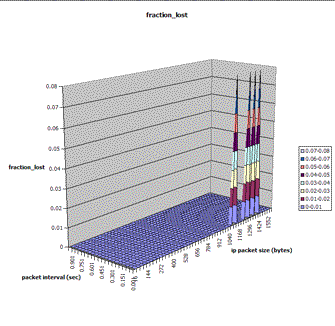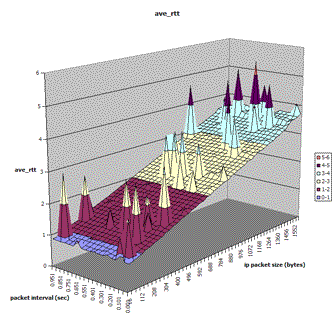


Ping Bottleneck Results
Purpose
The goal of this experiment is to classify the the performance of the Boston Server machines used for the MB-NG project. It is hoped that the performance results obtained from these tests can be
- compared and contrasted to the Spirent Smartbits and Adtech machines to quantify Grid network performance
- Determine plausibility of using normal computing machines to generate both background and test traffic into the LAN and WAN environments.
Assumptions
Results
Tests were performed from eth1 to eth1 on mbng2 to mbng3. They were connected via a cisco 7206 router with fifo queueing and no competing traffic.

Excel file of results here.

There were no packet losses during the experiment.


The minimum rtt shows a nice stable trend in the latency of the icmp echo/request as the size of the packet increases. The approximate minimum latency of these back to back tests was (theoretical 0 ip payload of 0 bytes) is about 0.005msec. The increase in latency of the b2b tests were about 0.063msec/byte. Note that these were at 100mbit to 100mbit.
With the results from this test, the minimum latency was about 0.75msec (about 0.745msec more) and an increase of about 0.0018msec/byte. This increase in latency is assumed due to the fact that there is a 10mbit bottleneck in the path (no congestion).


The results of the max and max rtts are not that meaningful, except for the fact that there appears to be a slight trend in the average rtt with increased packet size.
Overall, these two graphs show that there is quite a large variation in the latency of packets even when they travel just through a cable.
| Wed, 23 July, 2003 13:07 |
Room D14, High Energy Particle Physics, Dept. of Physics & Astronomy, UCL, Gower St, London, WC1E 6BT